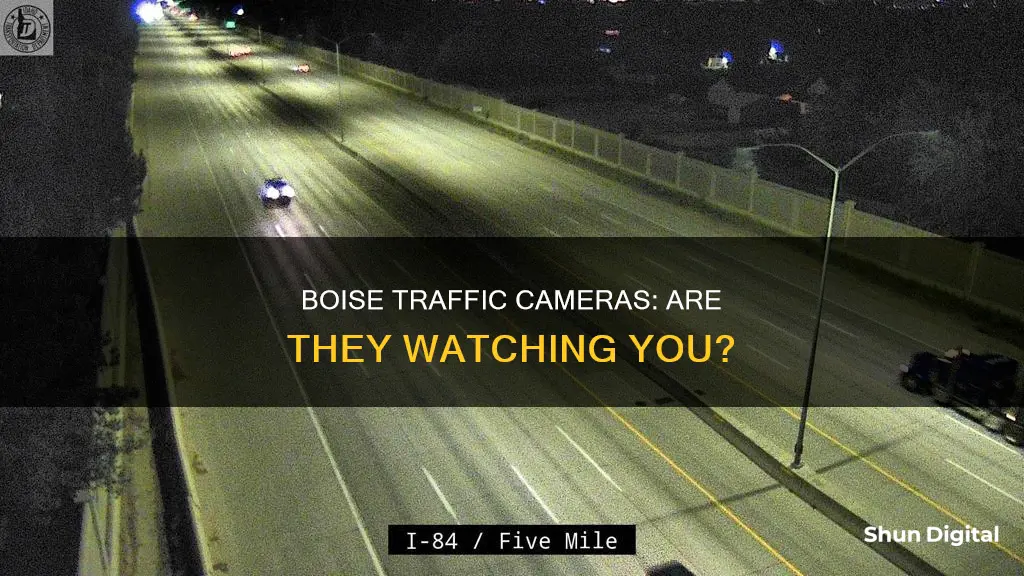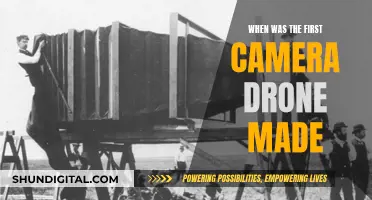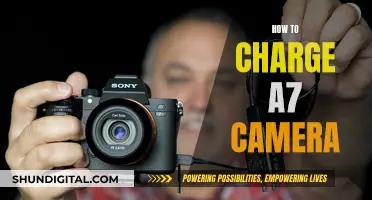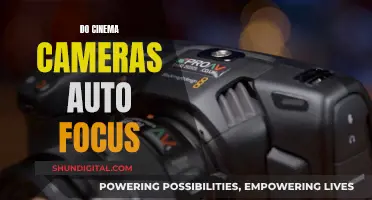
Boise has several traffic cameras installed at various locations, including Federal Way at Gowen, I-84 at Milepost 51 (Curtis), I-84 at Franklin Blvd., State at Veterans Parkway, Capitol at University, and more. These cameras help monitor traffic flow and provide valuable data for traffic management and safety purposes. Live feeds from these cameras are often accessible to the public through websites and mobile apps, allowing commuters to stay informed about road conditions and make informed travel decisions. Additionally, some websites offer the option to create customized routes and receive notifications about events or incidents that may impact their daily commute.
| Characteristics | Values |
|---|---|
| Live Traffic Cameras | Local Capitol Blvd (US-20), Local 6th St (US-20), Local Front St (US-20), Local Myrtle St (US-20), Local University Dr (US-20) |
| Traffic Camera Websites | Idaho 511, KTVB, Ada County HD |
What You'll Learn

Boise traffic cameras: locations
Boise has several traffic cameras located at major intersections across the city. These cameras provide a live feed of traffic conditions and help commuters and the authorities monitor the traffic flow and identify any incidents or congestion. Here is a list of some of the key locations where these cameras are installed:
- Federal Way at Gowen
- I-84 at Milepost 51 (Curtis)
- I-84 at Cole-Overland
- I-84 at Locust Grove
- I-84 at Robinson Road
- I-84 at Franklin Boulevard
- State Street at Veterans Parkway
- State Street at Ellens Ferry
- State Street (Highway 44) at Eagle
- Chinden at Curtis/Veterans Parkway
- Fairview at Milwaukee
- Fairview at Maple Grove
- Fairview at Five Mile
- Fairview at Cloverdale
- Fairview at Locust Grove
- Fairview (Cherry) at Meridian
- Franklin at Milwaukee
- Emerald at Milwaukee
- Franklin at Maple Grove
- Franklin at Five Mile
- Franklin at Locust Grove
- Overland at Entertainment
- Overland at Maple Grove
- Overland at Five Mile
- Overland at Cloverdale
- Overland at Locust Grove
- Overland at Meridian
- Broadway at University
- Broadway at Warm Springs
- Capitol at University
These cameras provide a comprehensive view of traffic conditions in Boise, allowing for better traffic management and helping commuters make informed decisions about their travel routes. The live feed from these cameras can be accessed through various websites and mobile applications, providing real-time traffic updates to the public.
Highway Patrol Car Cameras: Are They Watching?
You may want to see also

Live traffic camera feeds
Boise has several traffic cameras in place across the city, and you can access live traffic camera feeds from a number of sources.
The Idaho 511 website offers a comprehensive service. You can sign up for an account to personalize your experience and receive traffic notifications. To do this, simply enter your name, email, and create a password. You will then be sent an email to verify your account. You can also add your phone number to receive text notifications. The site allows you to create and save customized routes, and you can choose to be notified of any events affecting your route.
There are also a number of other websites that offer live traffic camera feeds. These include KTVB, which provides a list of locations with cameras, and WeatherBug, which offers live traffic cameras for several Boise roads, including Capitol Blvd (US-20), 6th St (US-20), and Front St (US-20).
The Evolution of Camera Bellows: Materials and Design
You may want to see also

Traffic safety concerns
Traffic safety is a significant concern for any city, and Boise, Idaho, is no exception. With a growing population and an increasing number of vehicles on the road, ensuring smooth and safe traffic flow is essential. One way to achieve this is by utilizing traffic cameras, which can help monitor and manage traffic and also aid in enforcing traffic rules and regulations.
The city of Boise can benefit from installing traffic cameras at major intersections and highways to improve traffic safety. These cameras can provide real-time footage of traffic conditions, helping authorities make informed decisions about traffic management. For instance, cameras can be placed at busy intersections such as Capitol Blvd, 6th St, and Myrtle St, to monitor traffic flow and identify potential bottlenecks or problem areas. This allows for the optimization of traffic signal timing, reducing congestion and the risk of accidents.
Additionally, traffic cameras can enhance road safety by aiding in the enforcement of traffic laws. Cameras can capture and record instances of speeding, running red lights, or other traffic violations, providing valuable evidence for authorities. This not only helps identify and penalize offenders but also serves as a deterrent, encouraging drivers to adhere to the rules and drive more carefully. The presence of cameras can also help improve emergency response times, as authorities can quickly identify and respond to accidents or incidents, reducing the impact on traffic flow and ensuring prompt assistance.
While traffic cameras offer numerous benefits, it is essential to consider privacy concerns. The installation and use of cameras should be done in a way that respects the privacy of individuals. This includes ensuring that camera footage is securely stored and accessed only by authorized personnel for the intended purposes of traffic management and law enforcement. Clear guidelines and regulations regarding the use and retention of footage should be established and communicated to the public to address any privacy concerns.
In conclusion, traffic cameras play a vital role in enhancing road safety and improving traffic flow in Boise. By providing real-time monitoring, aiding in law enforcement, and assisting with emergency response, these cameras contribute to a safer and more efficient transportation system. However, it is crucial to balance these benefits with individuals' privacy rights through careful policy implementation and transparent communication with the community.
Smartphone Cameras: Which Devices Shoot Raw?
You may want to see also

Traffic investigation requests
The Boise Police Department (BPD) takes traffic safety seriously and has a three-pronged approach to tackling traffic-related issues: Education, Enforcement, and Engineering. The BPD Motor Unit enforces traffic laws and educates drivers during regular traffic stops. They also hold workshops and attend high school driver education classes.
The BPD also focuses on the engineering aspects of traffic issues. Motor officers are assigned to evaluate and resolve problems in areas identified as traffic problem zones. They work with the Ada County Highway District to fix issues such as traffic control signals and lighting. The BPD receives traffic complaints daily, which are regularly reviewed, and motor officers are then assigned to specific areas for follow-ups.
If you wish to file a traffic complaint or report a traffic concern in Boise, you can do so through the BPD's online reporting system. This system is for non-emergencies, and you may need to create an account. Reports can also be made by calling the non-emergency dispatch number. If you require immediate police assistance, you should always call 911.
Traffic Camera Tickets: Enforceable in Alabama?
You may want to see also

Traffic camera accounts
Traffic cameras are an invaluable tool for monitoring road conditions and managing traffic flow, especially in busy cities. While they are not present on every road, they are common on major roads, freeways, and intersections. These cameras are typically managed by the local Department of Transportation or law enforcement agencies, and in some cases, private firms.
Accessing footage from these cameras can be a crucial step in car accident investigations and legal proceedings. Here is a step-by-step guide on how to access traffic camera footage:
Step 1: Camera Location and Jurisdiction
The first step is to identify the location of the camera that may have recorded the incident. This can be done by revisiting the scene, using Google Street View, or referring to the police report, which should include the location details. Noting the exact location is crucial, as different agencies have jurisdiction over different areas, and the cameras may be operated by the transportation department, law enforcement, or a private entity.
Step 2: Contact the Proper Agency
Once the agency responsible for the camera is identified, the next step is to reach out to their representatives. Contact information is typically available on official websites or through direct phone calls or emails. Some agencies may require filling out a form or providing specific details about the incident, such as date, time, and street names, to narrow down the footage.
Step 3: Requesting the Footage
You can typically request access to the traffic camera footage by contacting the relevant agency through their official channels. In some cases, you may need to download and fill out a form and submit it via email or their website. While it is not mandatory to involve an attorney at this stage, they can be beneficial. A personal injury lawyer is experienced in these processes and can increase the chances of a successful request. Additionally, they can help obtain a subpoena if needed to compel the release of the footage.
Step 4: Following Up
Agencies dealing with numerous requests may sometimes overlook or delay responding to individual inquiries. It is important to follow up on your request through polite emails or phone calls to ensure it doesn't fall through the cracks.
Step 5: Reviewing the Footage
Even if you receive the footage, it is essential to review it to ensure it matches your expectations and captures the incident in question. If the wrong footage is sent, you must request a correction immediately. Additionally, keep in mind that traffic camera footage is typically stored for a limited time, which varies by agency and state, so act promptly to avoid losing critical evidence.
Accessing traffic camera footage can be a complex and time-consuming process, but it is worth the effort when building a legal case or seeking compensation. Remember that each state, county, and agency may have unique procedures and requirements for releasing surveillance videos, so understanding these processes can improve your chances of a successful request.
Olympus Cameras: High-Res Mode Options Explored
You may want to see also
Frequently asked questions
Yes, Boise has traffic cameras.
There are traffic cameras on the following roads in Boise:
- I-84 at Milepost 51 (Curtis)
- I-84 at Cole-Overland
- I-84 at Locust Grove
- I-84 at Robinson Road
- I-84 at Franklin Boulevard
- State Street at Veterans Parkway
- State Street (Highway 44) at Eagle
- Chinden at Curtis/Veterans Parkway
- Fairview at Milwaukee
- Fairview at Maple Grove
- Fairview at Five Mile
- Fairview at Cloverdale
- Fairview at Locust Grove
- Fairview (Cherry) at Meridian
- Franklin at Milwaukee
- Emerald at Milwaukee
- Franklin at Maple Grove
- Franklin at Five Mile
- Franklin at Locust Grove
- Overland at Entertainment
- Overland at Maple Grove
- Overland at Five Mile
- Overland at Cloverdale
- Overland at Locust Grove
- Overland at Meridian
- Broadway at University
- Broadway at Warm Springs
- Capitol at University
- Local Capitol Blvd (US-20)
- Local 6th St (US-20)
- Local Front St (US-20)
- Local Myrtle St (US-20)
- Local University Dr (US-20)
You can view the traffic cameras in Boise by visiting the Idaho 511 website or the Ada County HD, ID website. You can also view Boise traffic cameras on the WeatherBug website.







